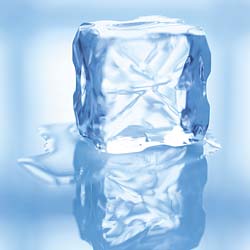
The Japan Agency for Marine-Earth Science and Technology (JAMSTEC) and the Japan Aerospace Exploration Agency (JAXA) cooperatively analyzed oceanic and atmospheric observation data and sea ice data acquired by satellites, and found that the sea ice area in the Arctic Ocean has been decreasing at a much faster pace than expected compared to the previous worst record in the summer of 2005. After satellite observations started in 1978, the observed area shrunk to its lowest level on August 15, 2007. Ice melting normally continues until mid September, thus further shrinkage of the sea ice area is expected. The observed phenomenon significantly exceeded the forecasted model submitted in the Intergovernmental Panel on Climate Change (IPCC) fourth Assessment Report, and the big difference tells us that the model may not precisely reflect the actual situation in the Arctic Ocean.
The following are findings as a result of analysis of observation data acquired by the Advanced Microwave Scanning Radiometer (AMSR-E). The AMSR-E acquires observation data and visible images of sea ice density.
1. Since July, the smallest record of sea ice area in the Arctic Ocean has been broken every day.
2. Since the beginning of August, the shrinkage of sea ice has been accelerated by a low pressure system generated and lingering off Siberia.
3. On August 15, the total sea ice area in the Arctic Ocean reached a new low.
4. If this pace of melting continues, the sea ice area reduction pace may significantly exceed the IPCC forecast, and it may actually reach the forecasted values for 2040 to 2050.
Continue reading Arctic Will Melt To Projected 2050 Levels, This Year